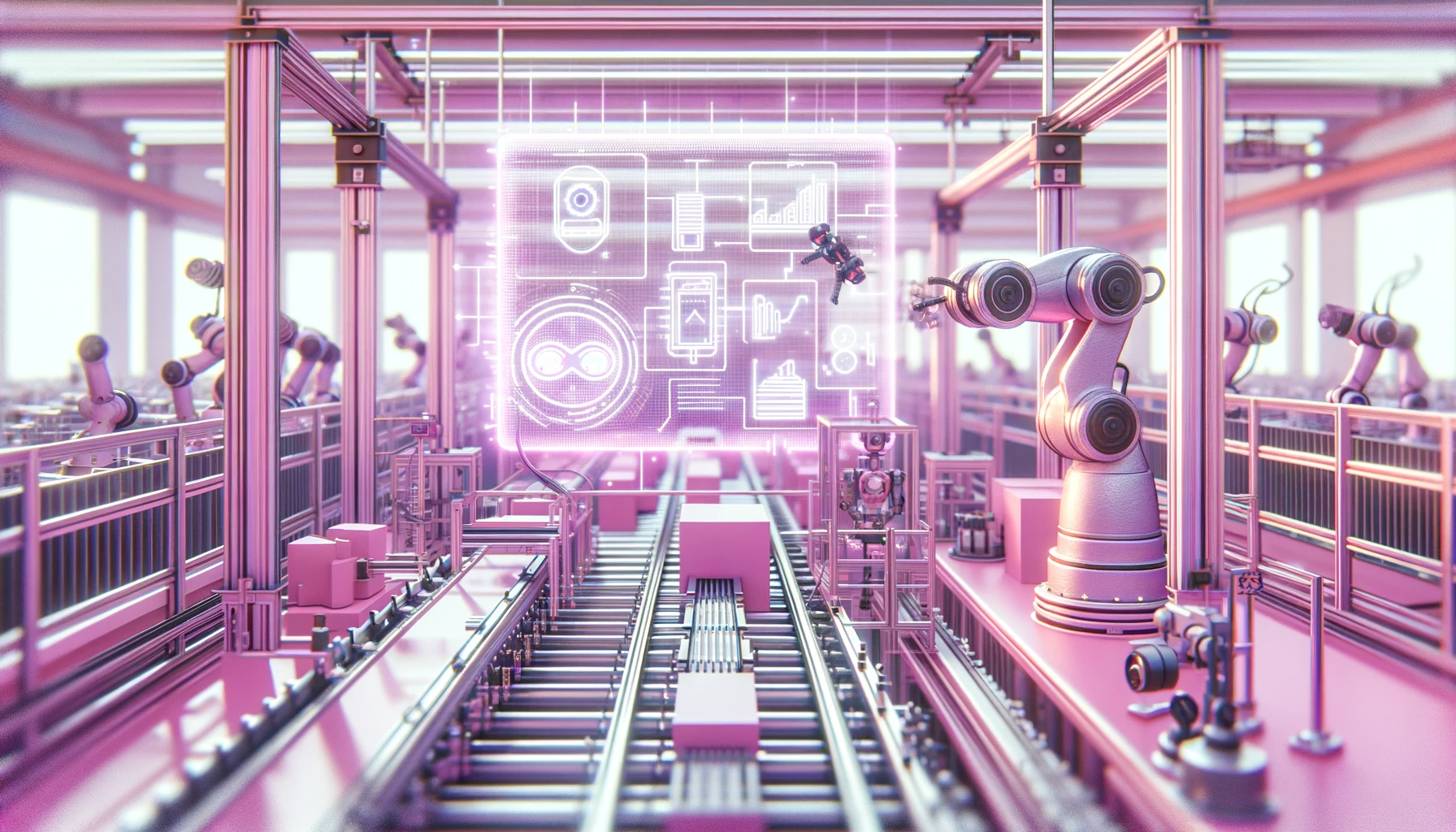In a paper published in the journal Electronics, researchers highlighted the crucial role of Artificial Intelligence (AI) and Explainable AI (XAI) in Visual Quality Assurance (VQA) within manufacturing. The review showed that AI-based Visual Quality Control (VQC) systems were predominantly used in defect detection. Yet, research on broader VQA practices and utilizing XAI methods could be more extensive. Integrating AI and XAI could enhance transparency, interpretability, and trust in AI systems, ultimately improving industry decision-making and quality assurance practices.
 Study: AI and Explainable AI in Visual Quality Assurance: A Comprehensive Survey in Manufacturing. Image credit: Generated using DALL.E.3
Study: AI and Explainable AI in Visual Quality Assurance: A Comprehensive Survey in Manufacturing. Image credit: Generated using DALL.E.3
AI and XAI in Manufacturing Quality Assurance
Organizations prioritize maintaining high-quality products and efficiency through QA practices, including QC, in a globalized and competitive business landscape. Organizations employ AI to automate QC, streamline processes, forecast maintenance needs, and improve product quality. AI systems must be explainable to gain trust, leading to the emergence of XAI. This survey systematically reviews the application of AI and XAI in VQA within manufacturing, exploring various practices and highlighting the adoption of XAI. The goal is to identify research gaps and future directions in this critical field.
Understanding ML Types and Performance Metrics
Types of Machine Learning (ML): ML involves learning algorithms that enable computers to improve their performance through experience with the trained computer program called a model. There are four types of ML: supervised learning, which uses labeled data for predictions and classifications; unsupervised learning, which identifies patterns and structures in unlabeled data; semi-supervised learning, combining labeled and unlabeled data; and reinforcement learning, where agents interact with an environment to maximize rewards. Manufacturing employs AI models based on ML for VQA.
Performance Metrics for VQA: Assessing AI and XAI systems in VQA requires selecting appropriate performance metrics. Key metrics include accuracy, precision, recall, F1 score, and area under the precision–recall curve (PR-AUC). Speed is crucial for real-time quality assessment, while XAI methods are evaluated for identity, separability, stability, selectivity, coherence, completeness, unity, and understanding, ensuring robust and reliable explanations.
Visual Quality Assurance: QA and QC are terms often used interchangeably but have distinct differences. QA covers all stages of product development, emphasizing the process's quality, while QC is a subset of QA, focusing on inspecting, testing, and rectifying products to meet specific quality standards. VQA is a subset of QA that explicitly addresses the visual aspects of product quality. VQA in manufacturing includes practices like VQC, Process Optimization (PO), Predictive Maintenance (PM), and Root Cause Analysis (RCA). VQA ensures that the visual aspects of products consistently meet or exceed quality standards, promoting a culture of continuous quality enhancement. VQA is vital for maintaining aesthetic and visual consistency across manufactured products.
Comparison with Existing Survey Papers
The authors compare their survey paper with other related survey papers in the field. They focused on survey papers that included content about AI explainability or interpretability. Out of the 34 survey papers they considered, only 3 were related to XAI, highlighting the relatively limited coverage of XAI in existing survey papers. The survey aims to address a research gap by providing a comprehensive overview of AI and XAI approaches in the context of VQA in manufacturing.
This paper strongly emphasizes the role of XAI in VQA, providing insights into its applications in different VQA practices, such as Visual Quality Control, Process Optimization, Predictive Maintenance, and Root Cause Analysis. Additionally, the paper discusses benchmark datasets used in VQA and offers a detailed analysis of AI and XAI methods employed in manufacturing, setting it apart from the other surveyed papers. This comparative analysis aims to highlight the unique contribution and focus of their survey paper on XAI in the context of VQA in manufacturing, a valuable resource for researchers and practitioners.
AI and XAI in Visual Quality Assessment
Researchers conducted a comprehensive literature review to examine the role of AI and XAI in VQA across diverse industries. They meticulously selected 143 papers from an initial pool of 340, primarily focusing on manufacturing sectors. The application of AI, mainly through pre-trained Convolutional Neural Networks (CNNs), played a pivotal role in VQC within manufacturing processes. Additionally, researchers introduced XAI methods to enhance model transparency, addressing the challenges posed by complex pre-trained models. The study also extended the application of AI to areas such as process optimization, predictive maintenance, and root cause analysis.
The surveyed literature predominantly featured the utilization of black-box deep learning models, including pre-trained CNNs, for VQA in manufacturing. Although these models offered automatic feature extraction and achieved high accuracy, concerns arose regarding their resource-intensiveness. Some researchers explored more interpretable models, like Linear Regression (LR) and tree-based models, which required fewer resources but potentially sacrificed performance accuracy. The shift towards interpretable ML models underscored ongoing discussions about their effectiveness. Moreover, the reviewed studies highlighted the importance of incorporating multiple data sources for robust and effective Visual Quality Assessment.
Conclusion
In summary, AI and XAI play a significant role in VQA across diverse industries. Although industries like component inspection, additive manufacturing, and electronic product manufacturing have embraced AI, XAI's adoption is limited. Stakeholders should maximize the benefits by balancing model complexity, incorporating diverse data sources, and addressing challenges related to awareness and interoperability. Enhancing XAI's role in VQA can lead to more transparent, trustworthy AI systems.